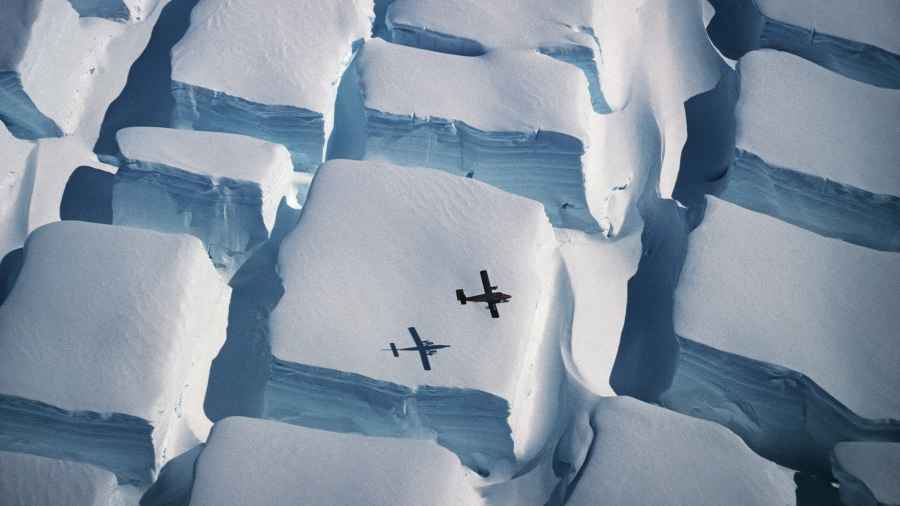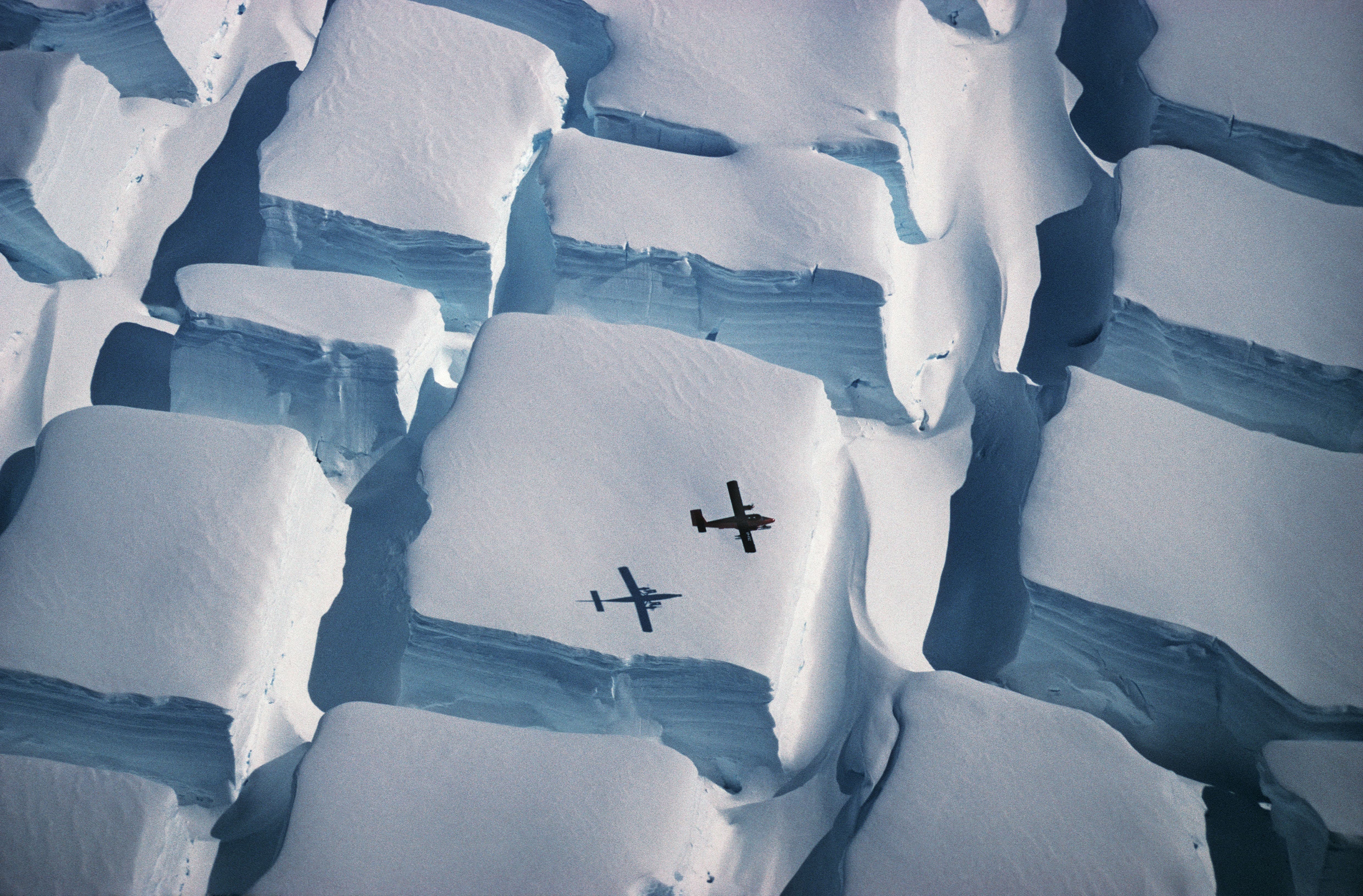
Icy sugar cubes – Overall winner and winner: Earth Science and Climatology. Credit: Peter Convey / Royal Society Publishing
A fascinating photograph of ‘sugar cube’ formations in Antarctica has won the top prize in the Royal Society Publishing photography competition.
Taken by Peter Convey, the image shows an ice sheet being stretched in opposite directions to create the unique arrangements, called bi-directional crevassing.
The photo was chosen out of 1,100 entries to win the 2017 competition, which aims to use photography to communicate science.
Convey said: “It’s been an incredible privilege to work in the Antarctic for nearly 30 years now, every time I go there it takes my breath away.
“As a terrestrial ecologist, originally specialising in insects, you wouldn’t think the inland areas of the continent could hold much scientific promise, but you would be so wrong.”
Continues below…
[collection name=”small”]
The photo was taken in early 1995 during a flight over the southern Antarctic Peninsula with a Pentax ME Super camera and 70-300 mm zoom on Kodachrome 64 slide film.
Other winners include Professor Nico de Bruyn’s photograph of orcas entering a small bay full of King Penguins and Antonia Doncila’s image of a polar bear resting on ice.
See some of the other winning images in our gallery below.
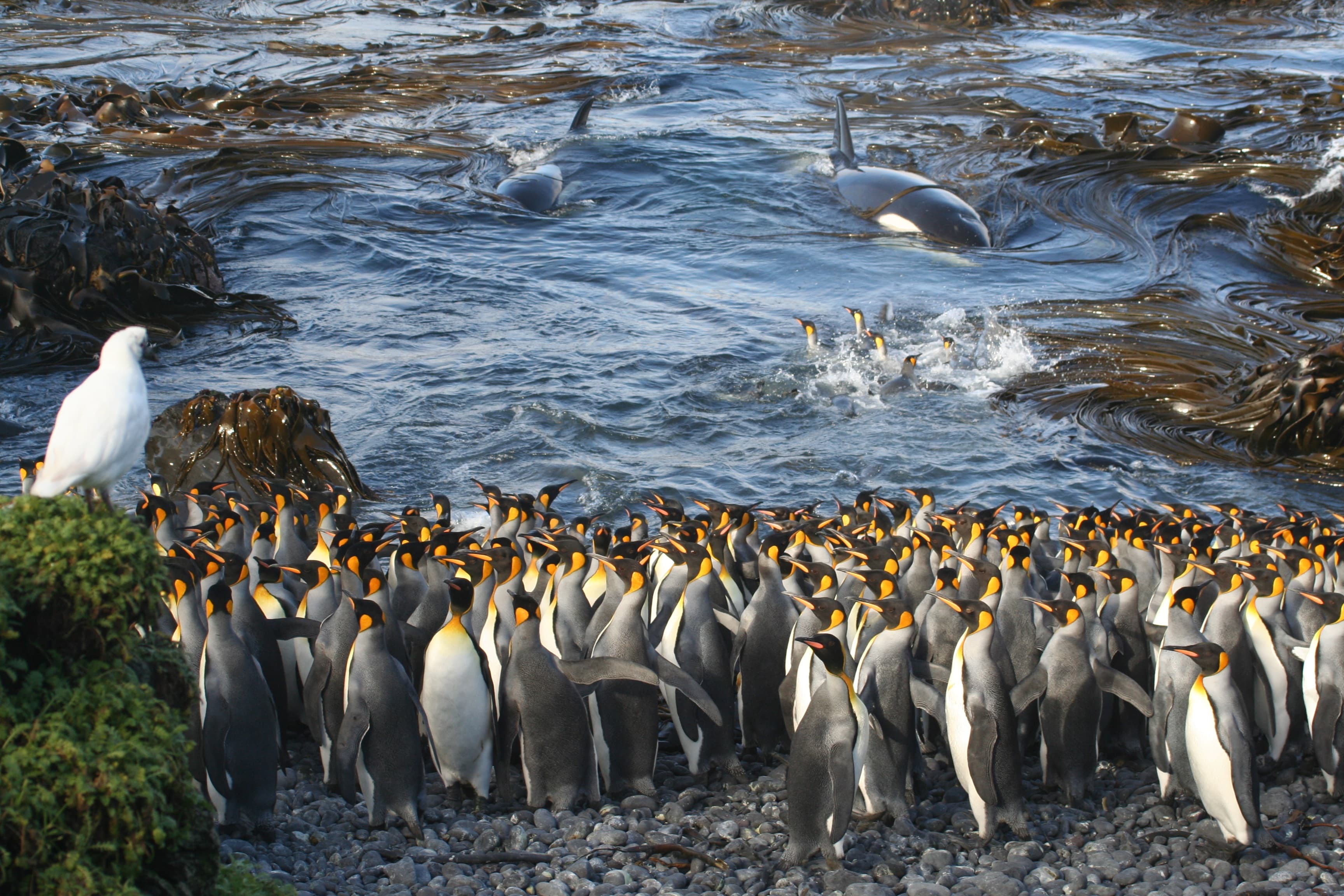
Waiting in the shallows – Winner: Ecology and Environmental Science. Credit: Nico de Bruyn / Royal Society Publishing
“Killer whales suddenly enter a small bay at Subantarctic Marion Island, surprising a small huddle of King Penguins busy preening themselves in the water. This photo was taken with an old Canon EOS350D, at a focal length of 55mm (Canon standard lens), Exposure time 1/200 with f-stop f/7.1 at an ISO speed of 200.”
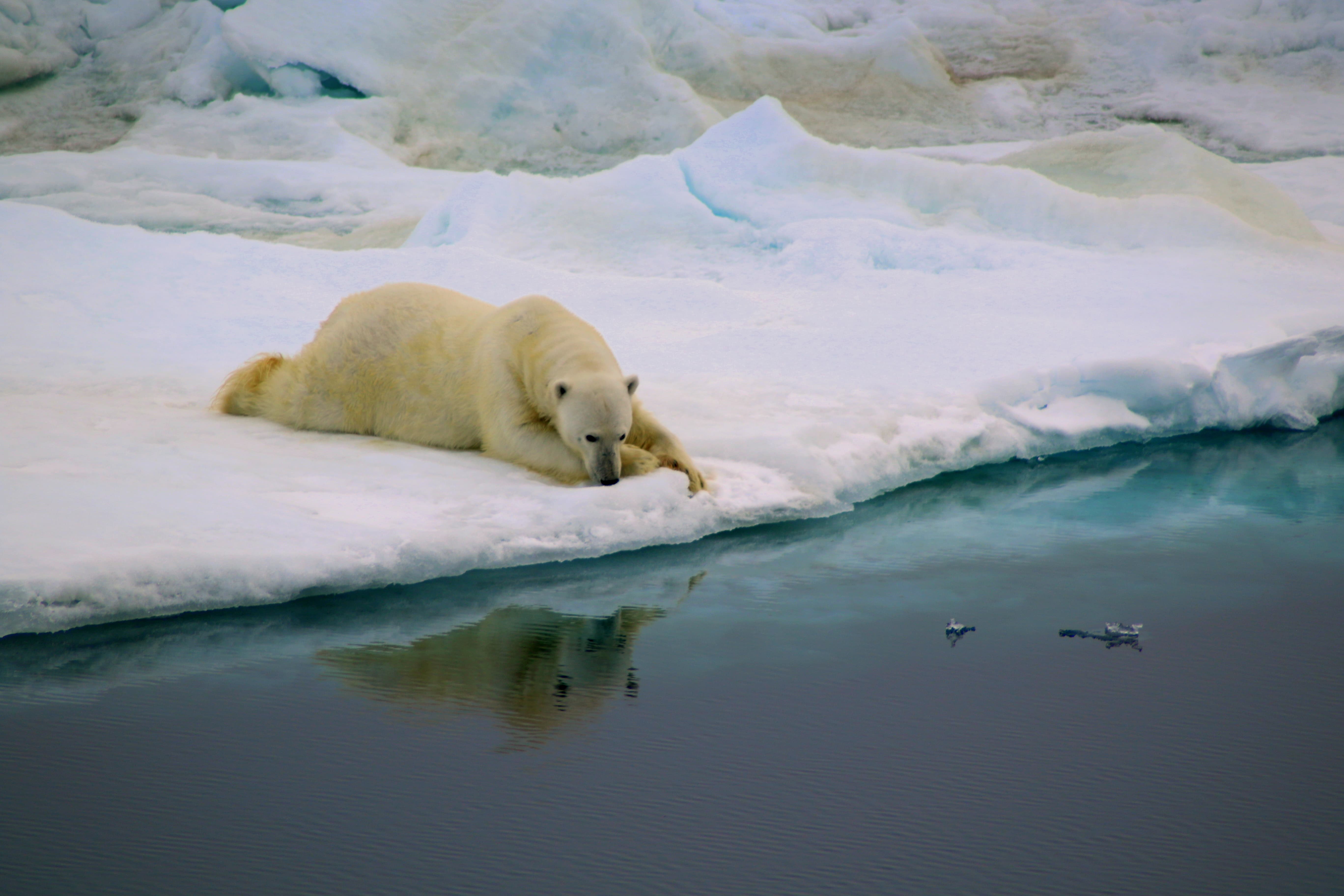
Respiro – Winner: Behaviour. Credit: Antonia Doncila / Royal Society Publishing
“This photograph was taken while crossing the Fram Strait to recover and redeploy mooring equipment near the eastern Greenland coast. On our journey, we saw polar bears swimming in an ocean of open water with no shadow of sea-ice for them to rest their heavy bodies on. Those polar bears were doomed to die from overheating while swimming hopeless in any direction. The protagonist of this photograph has been lucky. He found a portion of fast ice which rapidly became his home.
“Canon EOS 5D Mark II + Tamron telephoto lens (70-300mm, f5.6); Picture’s contrast was slightly adjusted in Picasa Photo Editor.”
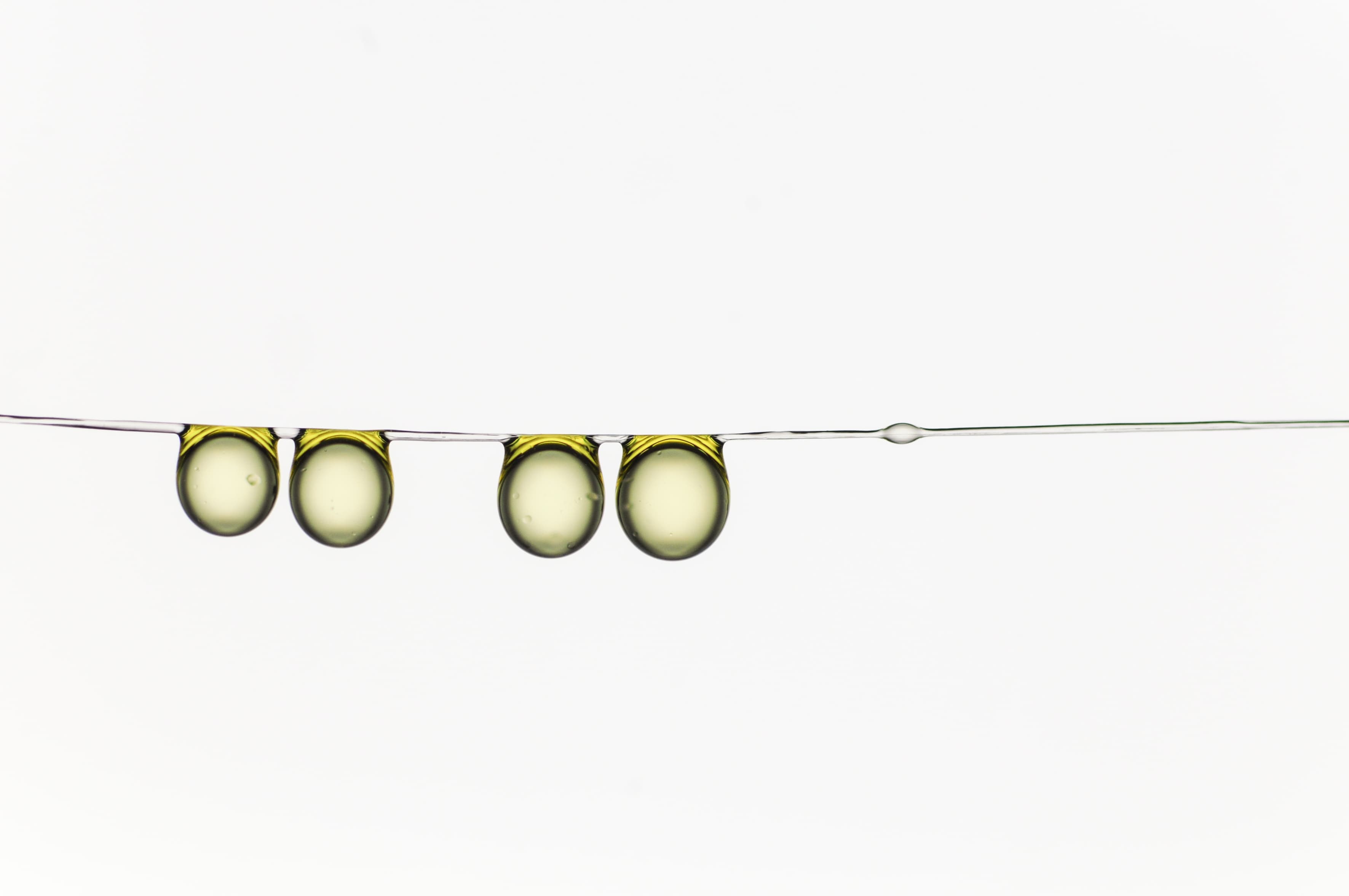
Olive oil drop family hanging together – Winner: Micro-imaging. Credit: Hervé Elettro / Royal Society Publishing
“Taken with a Nikon D300 camera and Phlox backlight at 10000 lux. Rudimentary Photoshop corrections.”
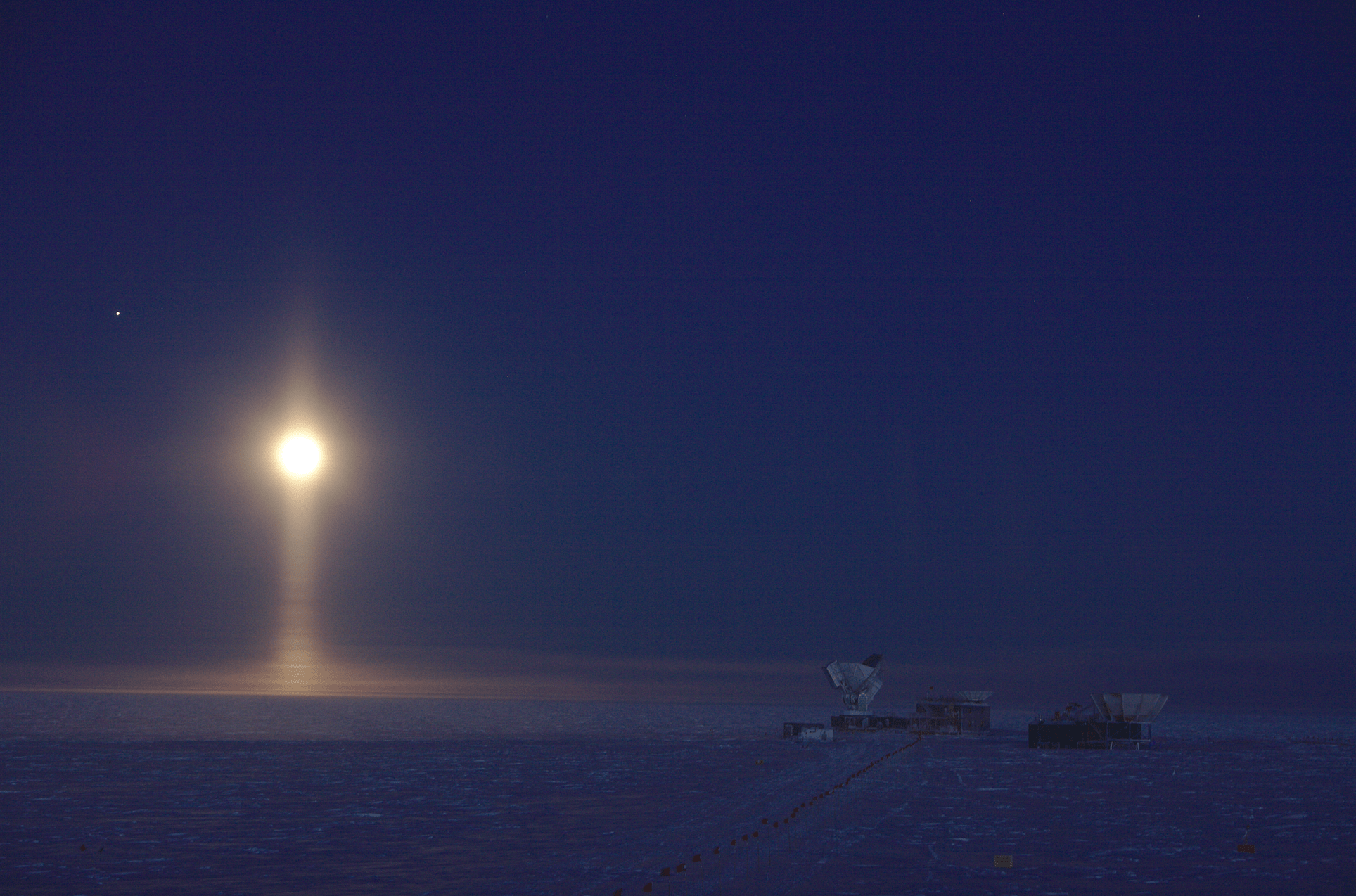
Lunar spotlight, South Pole, Antarctica – Winner: Astronomy. Credit: Daniel Michalik / Royal Society Publishing
“Ice crystals suspended in the atmosphere create a rare optical phenomenon: a light pillar underneath the Moon. The cold dry atmosphere at the Geographic South Pole favours this and similar phenomena (sun/moon dogs, halos, arcs); they are much more often seen here than in the non-polar regions. The picture was taken as one single long exposure in -60°C with minor contrast and exposure adjustments.”
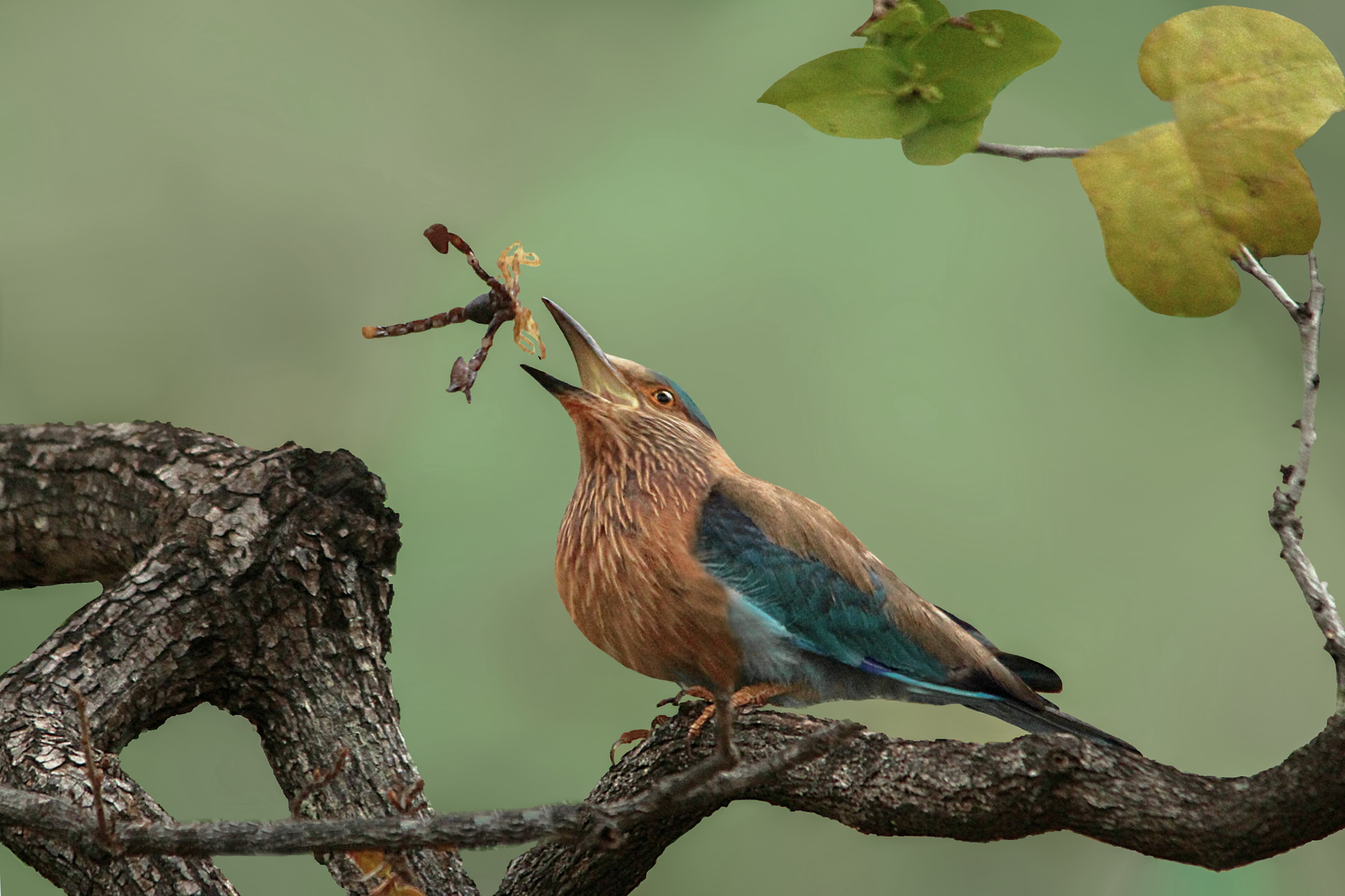
Toss the scorpion – Indian roller playing with the kill – Honorable mention: Behaviour. Credit: Susmita Datta / Royal Society Publishing
“It was an early morning safari drive at Tadoba Andhari Tiger Reserve, India. When everyone was busy tracking the tiger movement, this little moment happened on a tree branch, giving me the chance to shoot the sequence. The shot was taken at Tadoba, India. Canon 60D, Lens – Sigma 150-500.”
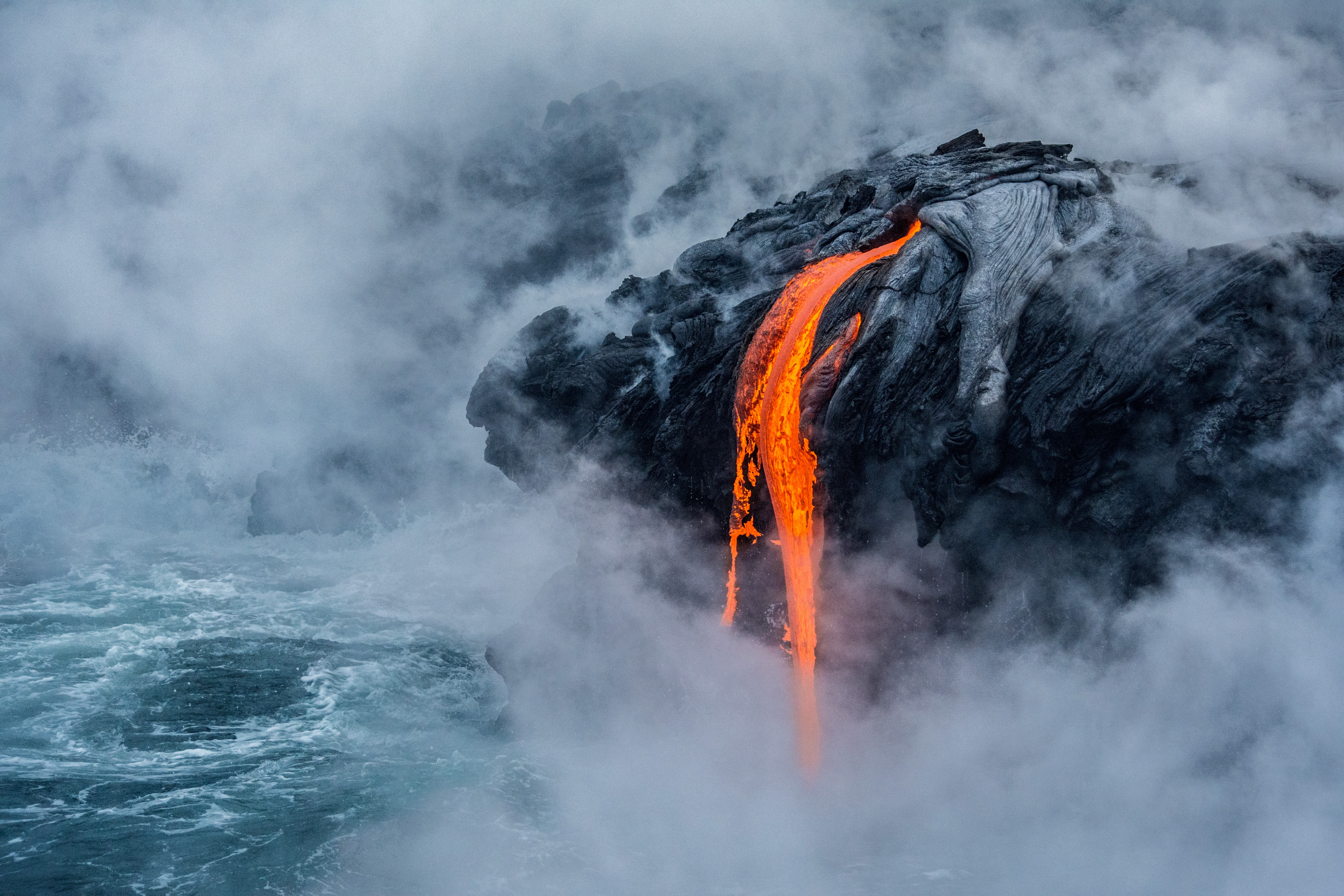
Pele’s fire – Honorable mention: Earth Science and Climatology. Credit: Sabrina Koehler / Royal Society Publishing
“I had the unique opportunity this year to capture nature’s creation, the 61G lava flow at the current Pu’u O’o eruption site of the active Kilauea volcano in Hawaii’s Volcano National Park. Hawai’i, or the Big Island, is the last of a series of islands created by this volcano, and still growing landmass every year. I had my 55-300 mm Tele lens and didn’t even need the full extend to capture the image. That’s how close we were.”
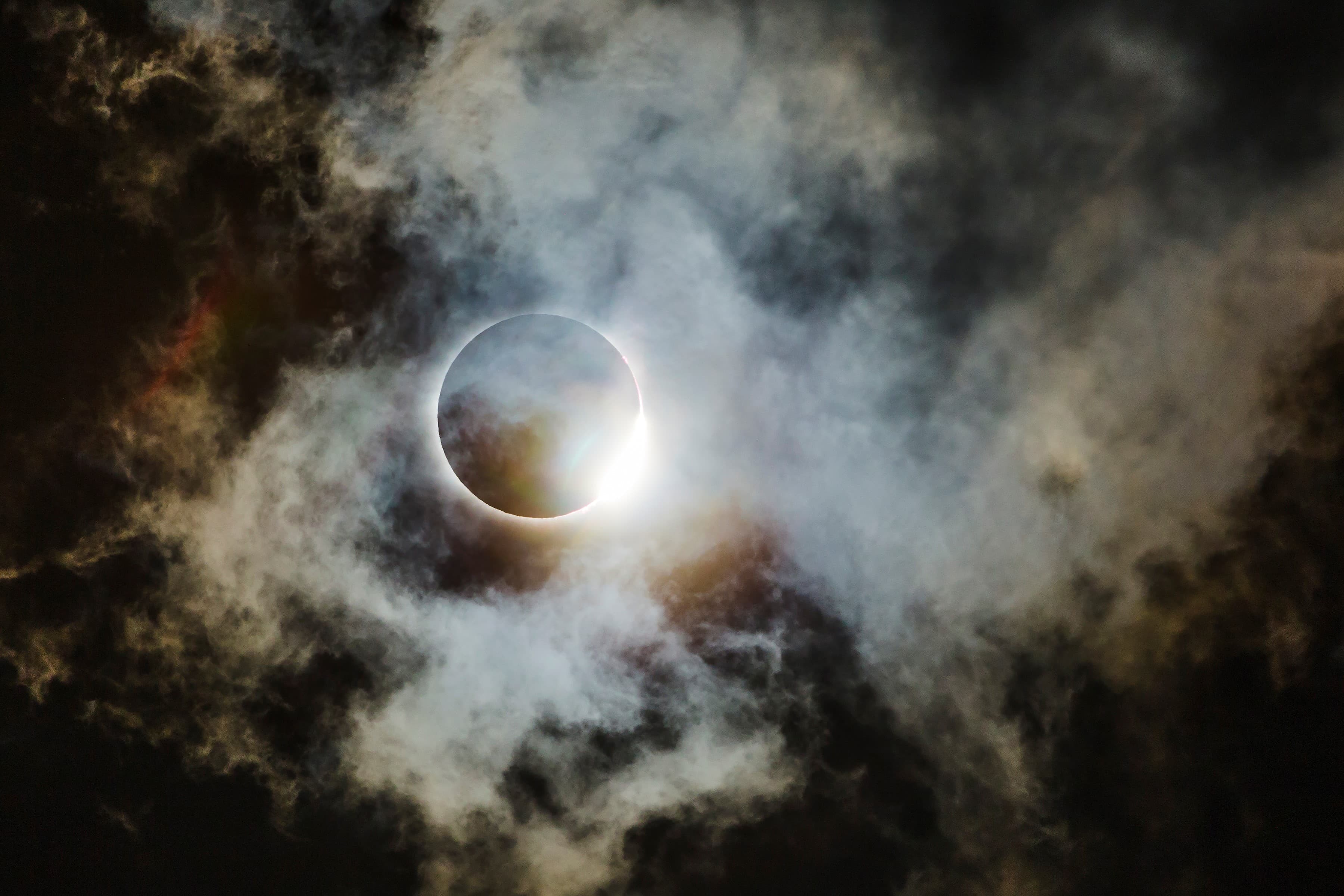
Diamond ring through thin clouds – Runner up: Astronomy. Credit: Wei-Feng Xue / Royal Society Publishing
“The American Eclipse of 2017 seen from the part of the path of totality that went through northern Georgia. This is the diamond ring lighting up some very thin cloud structures, looking almost like space clouds (i.e. a nebula). This photo was taken using a Canon EOS 6D digital SLR camera with a Canon EF 70-200mm + 2x extender at 400mm, and was processed using Photoshop CC.”
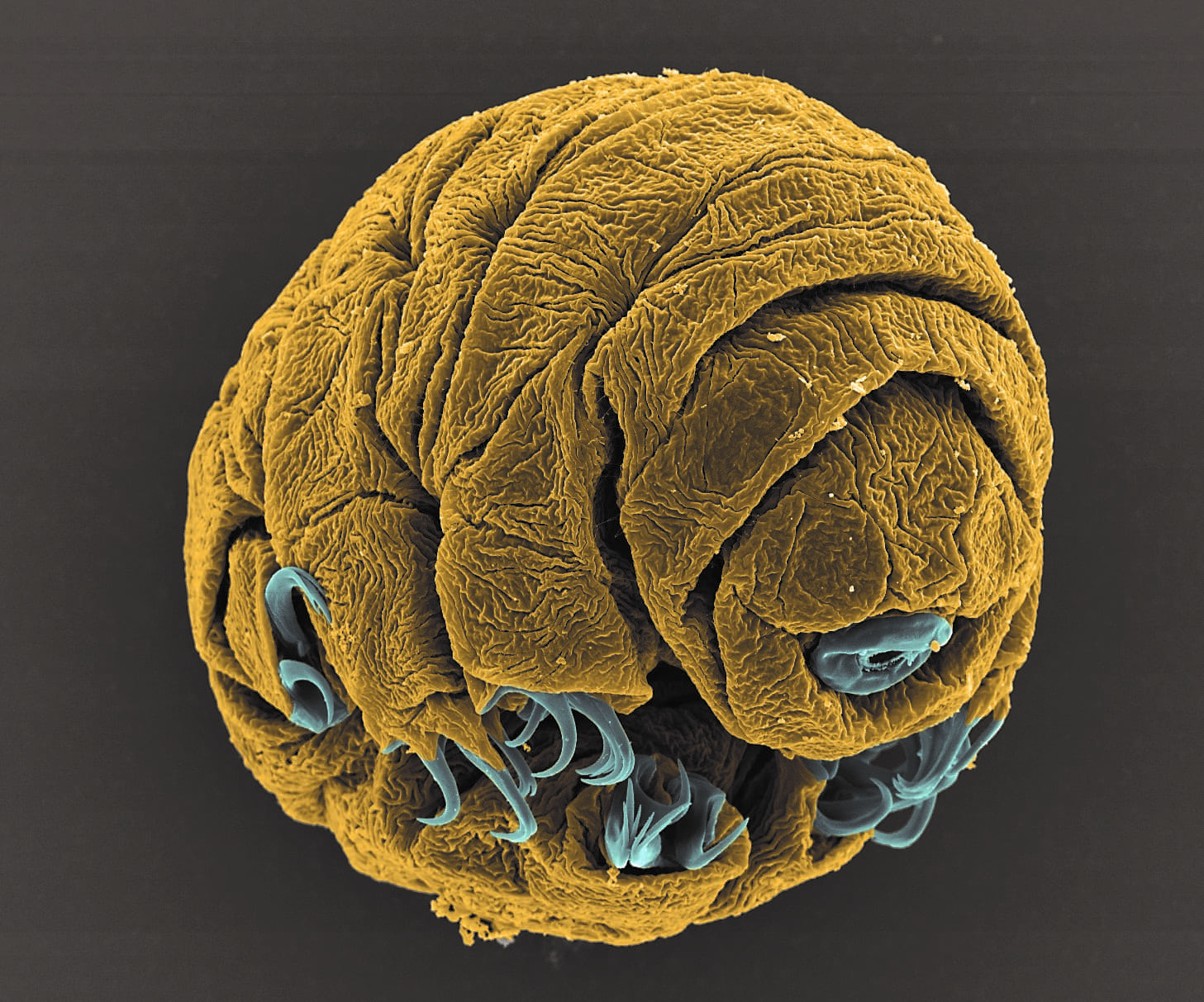
Water bear embryo – Runner up: Micro-imaging. Credit: Vladimir Gross / Royal Society Publishing
“Tardigrades (aka water bears) are tiny invertebrate animals that are able to survive extreme environmental conditions. This image depicts a 50-hour-old embryo of the species Hypsibius dujardini, taken with a scanning electron microscope at a magnification of 1800x. The embryo in the image is approximately 1/15 of a millimetre in length.”
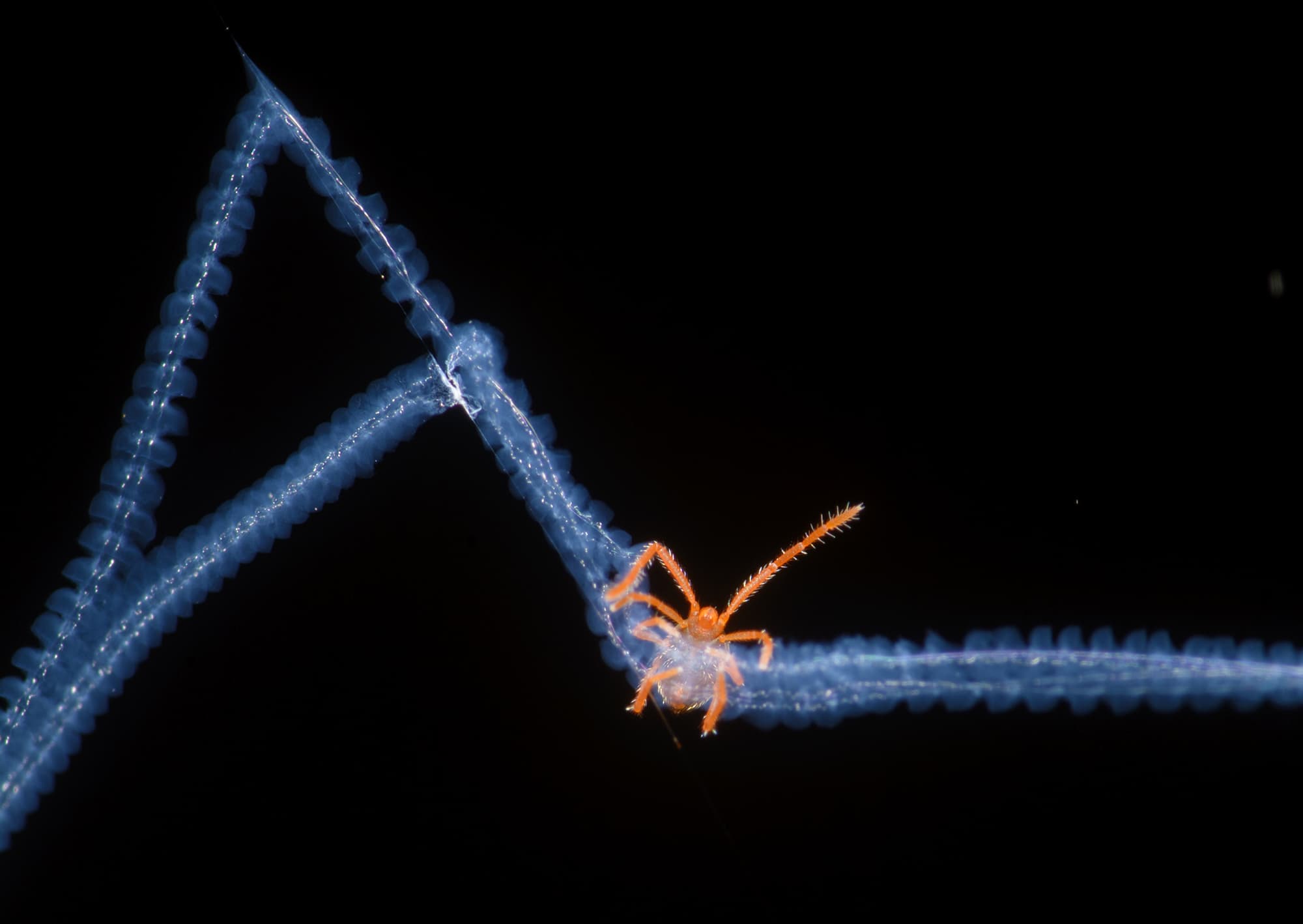
Acari trapped in spiderweb – Honorable mention: Micro-imaging. Credit: Bernardo Segura / Royal Society Publishing
“The spiders of the genus Austrochilus build some very conspicuous webs in Chilean temperate forests, and it’s impossible to not be amazed by the gigantic horizontal sheet of spiders up to a meter long. After taking some photos of it near Nahuelbuta National Park, I discovered that some threads have some incredible beautiful bluish tones.”

